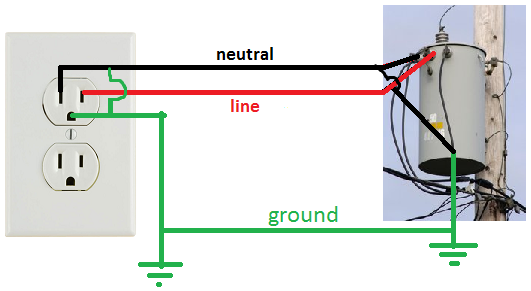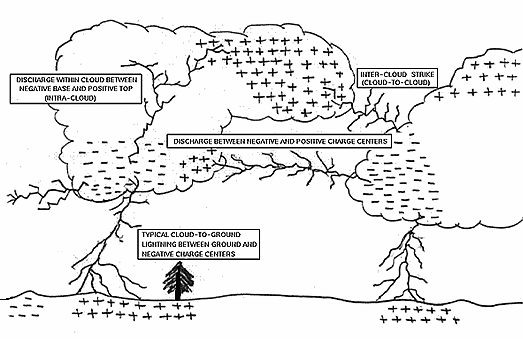Three Prong Circuits
Three Prong Plugs
The Main Idea
Why do outlets need that third prong? Grounded electricity explained without any confusing math or equations.
A Mathematical Model
Don't be silly, this is a page for dummies. Let's not bother with equations, as the real world is more complex than theory as it is.
A Computational Model
Below is a circuit diagram of the standard American three-prong outlet. The third prong provides a common zero voltage at either side of the green neutral connection, and removes the possibly fatal consequences of the neutral line resistance from the electric circuit.

Groundedness
Be sure to show all steps in your solution and include diagrams whenever possible
Sparks
Theoretically, in an AC system where there is no "plus" and "minus" an electric plug's two wires should be interchangeable. But let's get real, reality is much more complicated than theory and issues will "spark" up regardless of how perfect the circumstances are.
So let's build a theoretical situation where you, a highly accomplished engineer and businessman, want to create your own electric power distribution system for surrounding customers. Customers are calling and complaining that their fridges and stoves are failing. You receive a lawsuit stating that one of your customers had a powerful electric shock strike them unconscious. How come DC voltage are appearing in what is supposed to be an alternating current system?
Explosions
Every thunderstorm, you experience a disturbing trend where every customer's appliances are getting blown to pieces, as huge arcs of electricity streak across to strike your customers dead. Apparently, when lightening strikes your distribution center, a lightening-impulse voltage runs through the entire system and to your customers' homes. Many lawsuits follow.
But you still don't give up. So you do some research.
You find out a game-changing fact: that the earth acts as a electrostatic generator.

As thunderstorms push negative charges into the earth, and the earth filters the charges upward, a vertical charge flows through the earth-atmosphere system. A DC charge can build up and depending on wire heights and thunderstorm locations, this charge can be huge, ranging from hundreds to thousands of volts. You realize your electric distribution center performs as an antenna for the earth to the sky and creates a large potential difference.
Solution
Murphy's Law
Customer DeathToll Rises
The Third Prong
Connectedness
- How is this topic connected to something that you are interested in?
- How is it connected to your major?
- Is there an interesting industrial application?
History
Put this idea in historical context. Give the reader the Who, What, When, Where, and Why.
See also
Are there related topics or categories in this wiki resource for the curious reader to explore? How does this topic fit into that context?
Further reading
Books, Articles or other print media on this topic
External links
Internet resources on this topic
References
This section contains the the references you used while writing this page